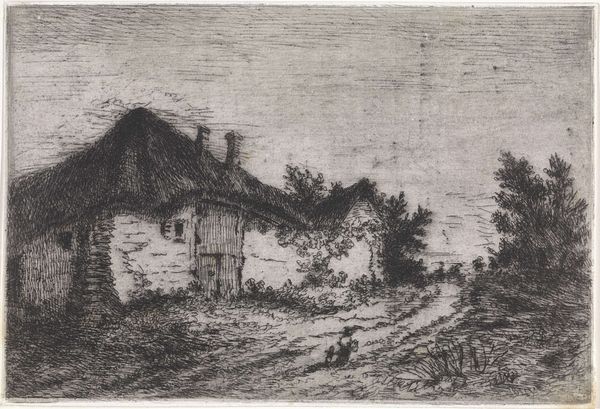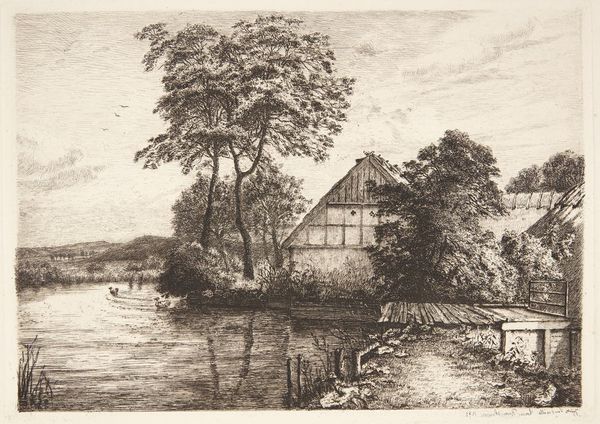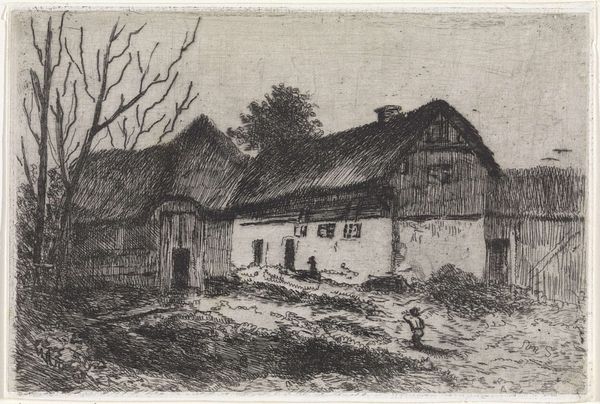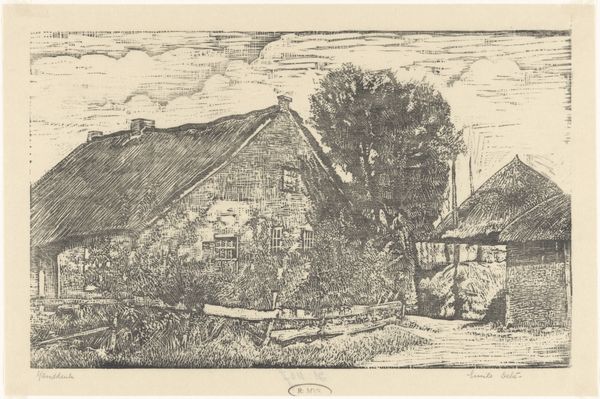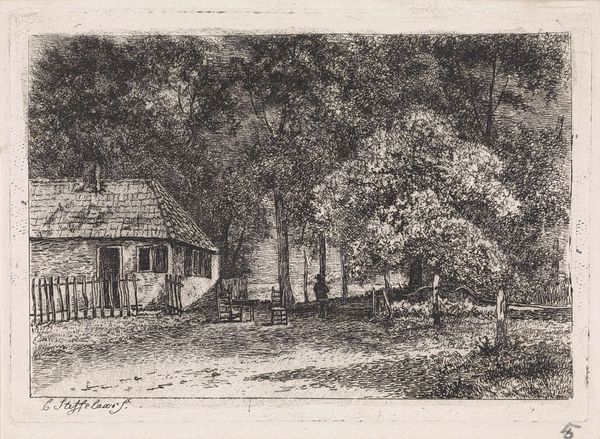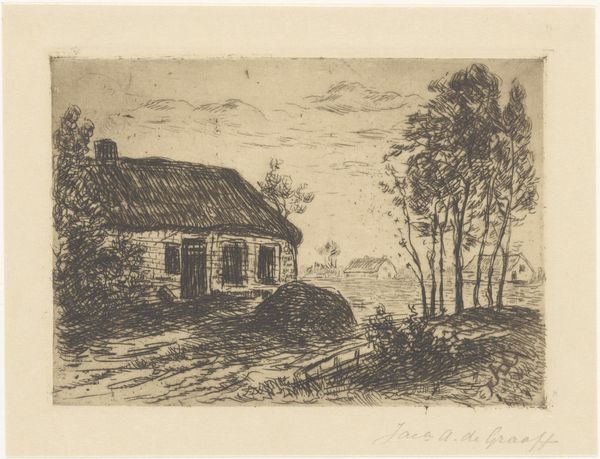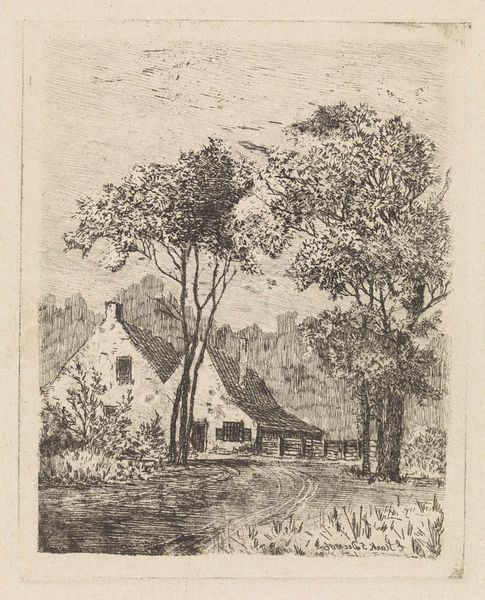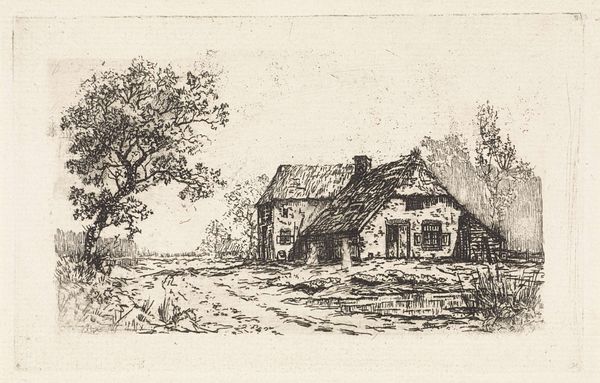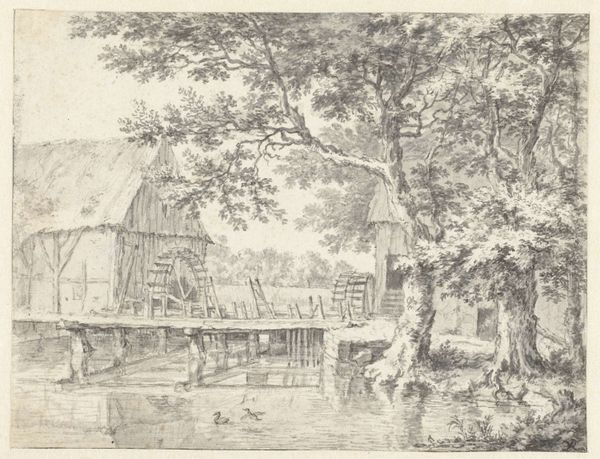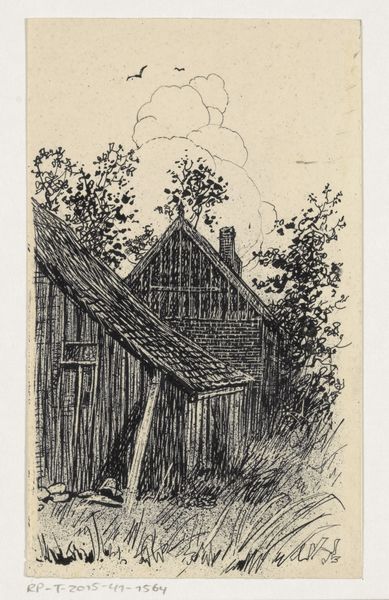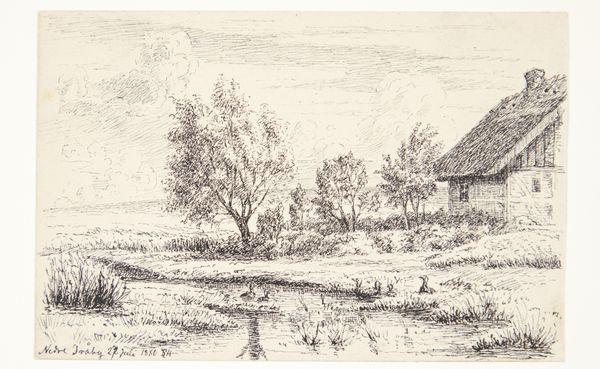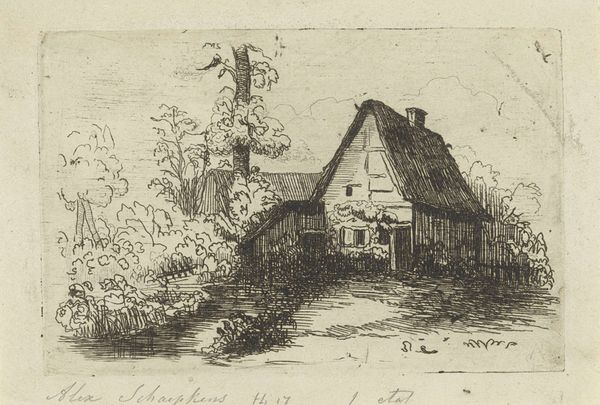
Dimensions: height 84 mm, width 125 mm
Copyright: Rijks Museum: Open Domain
This print, "Boerenhoeve," was made by Alexander Schaepkens using etching, a process with a fascinating material dimension. An etcher covers a metal plate with a waxy, acid-resistant ground, then scratches an image into that surface. The plate is then immersed in acid, which bites into the exposed metal, creating recessed lines. Ink is applied, the surface wiped clean, and the print is made by pressing paper onto the plate. Look closely, and you can see how the varying depths of line convey a sense of light and shadow, giving the image depth. Etching allowed artists to achieve fine detail and subtle tonal variations, but it demanded a degree of technical skill – a dialogue between the artist's hand, the chemical process, and the printing press. The resulting images could be widely distributed, offering an accessible slice of life to a broad audience. So, while "high art" is often seen as unique and precious, prints like this occupy a more democratic space, bridging the gap between skilled craft and artistic expression.
Comments
No comments
Be the first to comment and join the conversation on the ultimate creative platform.
